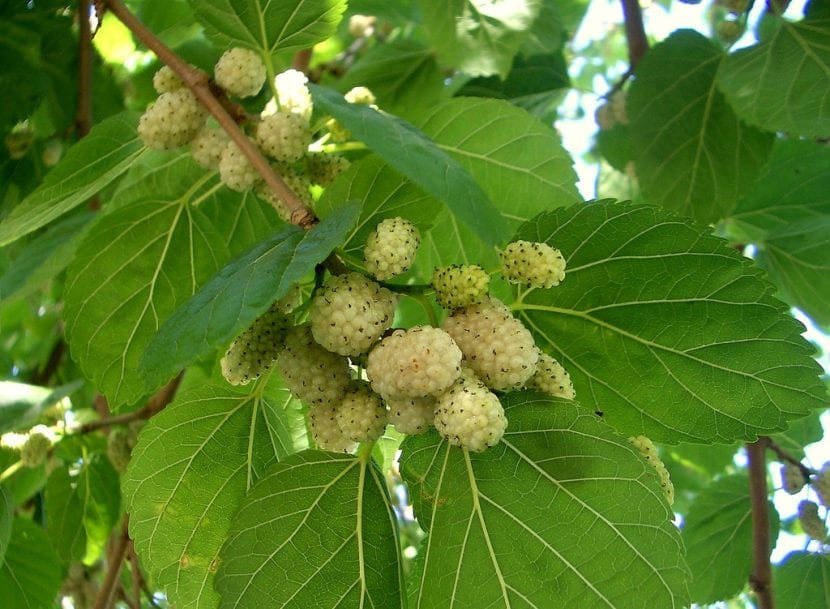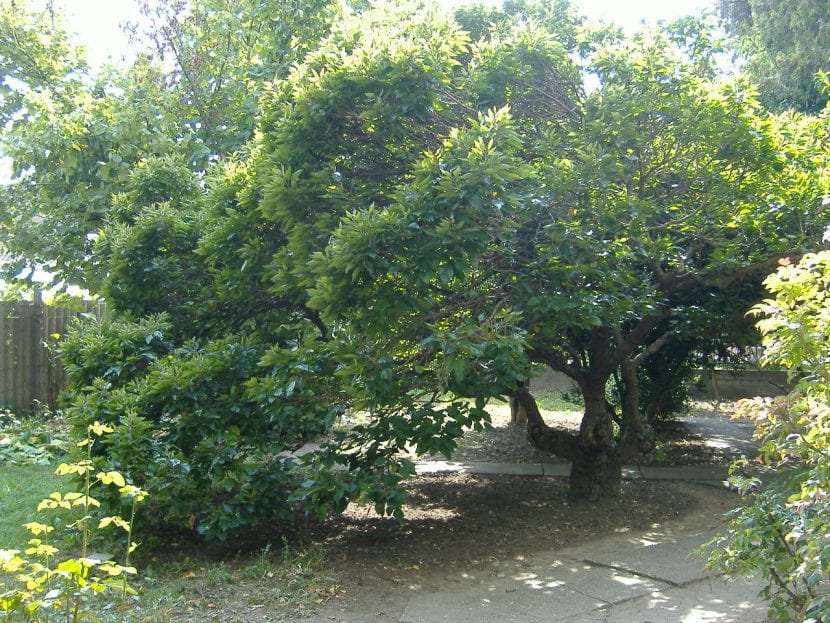
In towns and cities in temperate regions, the white mulberry to provide shade, but did you know that it also looks great (even I would say it looks much, much better) in a garden? And it is that this plant does not require hardly any care, and if we have also become fond of raising silkworms, we will not have to go anywhere to buy food for them.
The only thing is that, as I always like to remember, it is very important to know what are the characteristics of this plant so that we can enjoy it to the fullest, from day one. So let's go there 🙂.
Origin and characteristics

The white mulberry, also known as pink mulberry, white moral, or white mulberry, It is a deciduous tree native to the temperate zones of Central and East Asia that reaches a height of 15m. Its scientific name is Morus alba. It develops a branched crown, wide up to 4 meters, and its trunk thickens up to 45-60cm in diameter.
The leaves are petiolate, measuring 4-6 by 4-5cm, are ovate, with a toothed or lobed edge, and are light green in color. It blooms in April and bears fruit in May (in the northern hemisphere). The fruits are 2,5 by 1cm, they are white or pinkish-white, and they usually have no flavor.
Categories Morus alba
There are several varieties, which are:
- multicaulis: it has large leaves, up to 30cm, and dark black fruits.
- Pendulum: its branches are hanging or weeping.
- fruitless: grows very fast and does not produce fruit.
- Laciniata: the leaves are very lobed.
- pyramidalis: its crown is narrow.
What are their cares?

If we want to get a copy, we have to provide the following care so that it is well:
- Location: it has to be placed outside, in full sun. Plant at a minimum distance of 5-6 meters from pipes, paved soils, etc.
- Earth:
- Pot: universal growing substrate mixed with 30% perlite.
- Garden: it is indifferent as long as it has good drainage.
- Irrigation: 2 or 3 times a week in summer, somewhat less the rest of the year.
- Subscriber: from spring to late summer with organic fertilizers. These must be liquid if it is in a pot so that the drainage continues to be good.
- Planting or transplanting time: in spring.
- Pruning: late winter or autumn. Dry, diseased or weak branches must be removed, and those that have grown too much cut back a little.
- Rusticity: resistant up to -18ºC.
What did you think of the white mulberry?